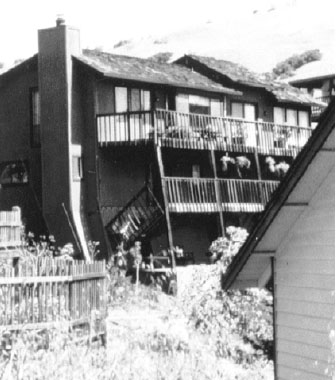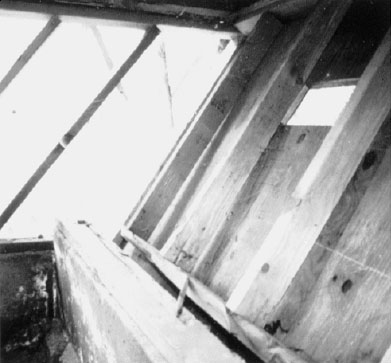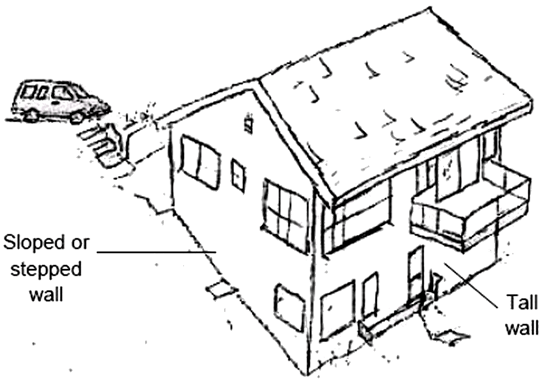The Seven Steps
Steep Slopes
The Problem

This hillside home was built on an unbraced tall wall that failed.
Source: Office of Emergency Services
Houses built on the sides of steep hills are often set on exposed posts or columns, as shown in the photographs.
The potentially hazardous conditions that are unique to homes on steep hillsides are:
- Stilt-type posts with or without diagonal bracing.
- Walls with very different heights or that are stepped or sloped down the hillsides.
If these posts or walls are not properly braced, they may collapse during an earthquake.
Sometimes, the supports on the downhill side will be hidden behind a tall wall that encloses a large unfinished space. (This is similar to, but taller than, a crawl space under a typical house built on flat ground.)
How to Identify

This photograph shows an interior detail of a home similar to the one above, showing substantial damage to a building with an unbraced tall wall.
Source: Office of Emergency Services
- Is the house located on a slope?
- Are the columns or walls supporting the home braced?
- If you are not sure if there is bracing or if the bracing is adequate, consult a licensed engineer.
The Solution

Hillside homes with sloped and tall walls or posts require special engineering.
Source: PEER and Nels Roselund, SE
Consult a licensed architect or engineer, and a licensed contractor, to fix this problem.
Source: California Seismic Safety Commission
How-to Resources
- Detailed information can be found in the International Existing Building Code, published by the International Code Council.
- Voluntary Earthquake Hazard Reduction in Existing Hillside Buildings, City of Los Angeles Municipal Code, Chapter IX, Article 1, Division 94.





